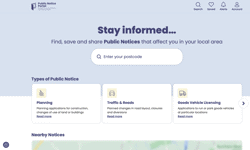It’s hard to mention digital publishing without technology playing a significant part of the conversation, and now that part is getting even bigger. There’s a strong, positive sentiment amongst digital publishers currently, which you can largely put down to the opportunities they sense are possible through new and emerging platforms. That’s the main theme running through the latest AOP Content and Trends Census, which also suggests that publishers perceive their digital businesses are facing a lower level of threats than was the case a year ago. Certainly compared to this time last year, publishers feel more resilient to the economic backdrop, whilst perhaps the pressing issue is one of people development. Earlier this year, we saw recruitment in the digital publishing industry start to grow again after the downturn of 2009 and publishers are fairly united (eight out of ten) in their agreement that one of the biggest challenges for the industry is around quality recruitment and development of skills.
Revenue models
When considering the broad digital landscape, the Census suggests that publishers are taking a realistic view of the changing scenario of revenue models and expect that despite the inevitable attention and focus on paywalls and paid content models, the reality is that advertising will dominate revenue generation online for some time yet. That’s a view held by over 80% of respondents despite the fact that almost as many (seven out of ten) also believe that consumers will accept that paying for some content online is inevitable. Whether paywall models will become widespread though sparks divided opinion, with those who do believe in the sentiment being in the minority.
It is true to say though that paid content models are inevitably seen as one of the key trends over the next twelve months and that more publishers are charging or plan to charge. In fact, three quarters of respondents to the Census have suggested they are either charging now, or will be, for some content, somewhere in their portfolio. That’s mainly of course around selective unique and timely outputs such as data services and business intelligence, which are the priority areas for more publishers to develop for paid content over the next twelve months. Single payments are far more widely adopted, and likely to be, rather than full scale paywalls, and in particular, apps are seen to provide potentially a major opportunity as a payment method, using free apps with paid features, which almost one in two publishers are considering over the next twelve months.
eReaders
So, technology is definitely seen as the enabler when it comes to encouraging paid content, with as many publishers seeing mobile and iPad apps, and eReaders and other tablets as being the main platforms of opportunity as the traditional core internet site. Of course that’s assuming the content is high quality and high value in the first place, but the convenience of access via downloads for portability and, especially in the case of the iPad, a more leisurely reading experience, is seen as a potential tipping point in driving the desire to pay to consume. The iPad is clearly making a major impact within publishers’ thinking and already one in six publishers have a paid iPad app. If the predictions for the year ahead play out, that will rise to around 75% of all publishers in twelve months’ time.
Certainly a strong opinion expressed by most publishers is that their content needs to be available in all places where consumers are, and the priority areas for publishers to concentrate on, in terms of content delivery, for the next twelve months are led by mobile sites, downloadable apps and iPad and other tablets. One in two publishers are acknowledging that each of these areas is a priority for them. We can’t of course forget the ubiquitous social media alliances, and almost all publishers are delivering content via Facebook, Twitter and YouTube.
Social media
On the subject of social media, publishers are seeing social bridging / content sharing (using Facebook “like”, or retweeting for example) as the key driver of audience growth back to their sites. Seven out of ten publishers would rate social bridging as the key activity for this purpose. When it comes to which social media activities can best drive brand affinity, publishers are firmly agreed that a brand presence on social networks such as Twitter, Facebook or LinkedIn is the main activity for the purpose. It’s not surprising then that nine out of ten publishers will be funding a brand presence on social networks over the next twelve months.
Measuring social media performance is always an interesting subject; typically it’s led by the number of unique users delivered back to the core site, but the number of followers on social networks is seen by almost as many publishers as an important measure. In both cases, around nine out of ten publishers are using these measures as barometers of success, with repeat visits per month the third key measure, adopted by seven out of ten publishers.
Mobile: the time has come
Back to emerging platforms, mobile has been a buzz word for a long time now but perhaps overhyped in terms of its relative importance. Now though, mobile is very much top of the agenda boosted of course by the arrival of the iPad and the impending range of other tablet devices and eReaders, which two thirds of publishers believe will transform the digital landscape. Publishers have earmarked the emergence of the iPad and its ilk as the most significant trend over the next twelve months, slightly ahead of the closely aligned mobile internet development. For one in two publishers, these will be the key trends, ahead of paid content models or other areas that have previously featured more prominently in publishers’ thinking, such as aggregation or personalisation.
Certainly, when it comes to the biggest perceived opportunities, publishers have responded almost universally to mobile, in view of the development and adoption of smartphones, the investment in 3G+ and the inevitable consumer appetite for apps. Over two thirds of publishers see the growth in mobile access inevitably changing the economies of web publishing.
The scale of mobile development is rapid; expect pretty much all publishers to have mobile sites somewhere in their portfolio in the next twelve months and in most cases that will be across the majority of their portfolio not just a few sites. Content creation for mobile, and particularly for mobile apps, is increasing fairly dramatically; in the case of apps, expect nine out of ten publishers to increase content distributed through that route. Over the last twelve months, we’ve seen a trebling of the number of publishers with paid apps and a 50% increase in those with free apps. The predictions for the coming twelve months are further significant growth so that at least 75% of publishers will have either paid or free apps or both.
Apps are also seen as perhaps the key source of mobile revenue opportunities, mainly through subscriptions and sponsorship as opposed to advertising. However the creation of apps is a major challenge for the industry, which is split between in-house development and external partnerships, perhaps the strongest example of the latter being the Guardian’s open API approach. Creating compelling content is crucial and it’s at the heart of every publisher’s business, but the ever expanding technology requirements around maximising the output of that content is inevitably driving more publishers to seek development partnerships and, earlier this year, the AOP Organisation Census suggested that 60% of publishers will be increasing their technology partnerships in 2010.
Ultimately, you get the feeling that the next twelve months is going to be an exciting period of innovation and creativity as digital publishers embrace the emerging platforms for content delivery. Advertising revenues are growing, forecasts are relatively bullish, and the key question will be, can publishers unlock significant additional revenue streams through creative technologies.










